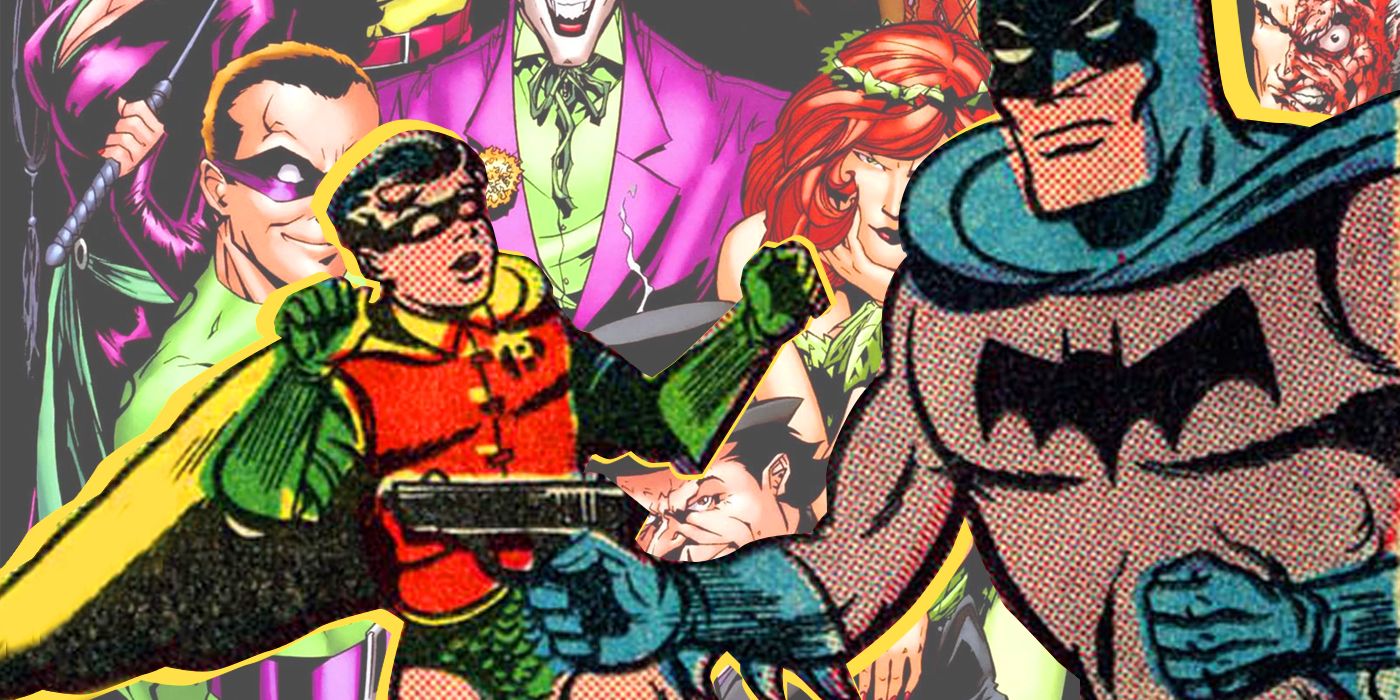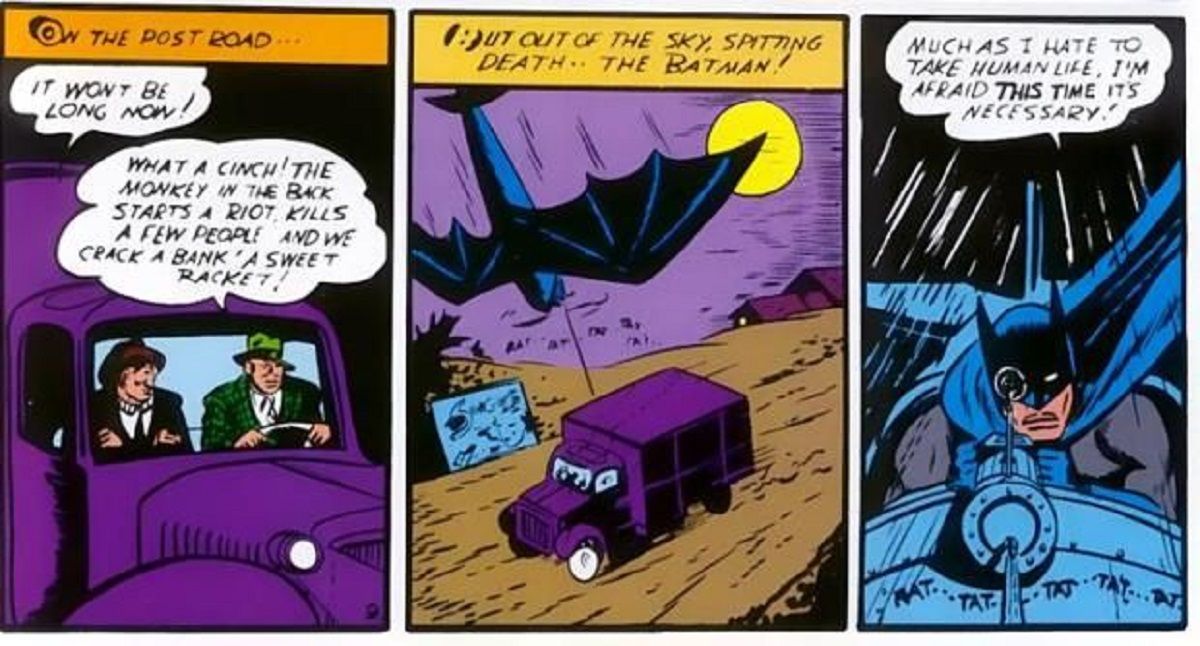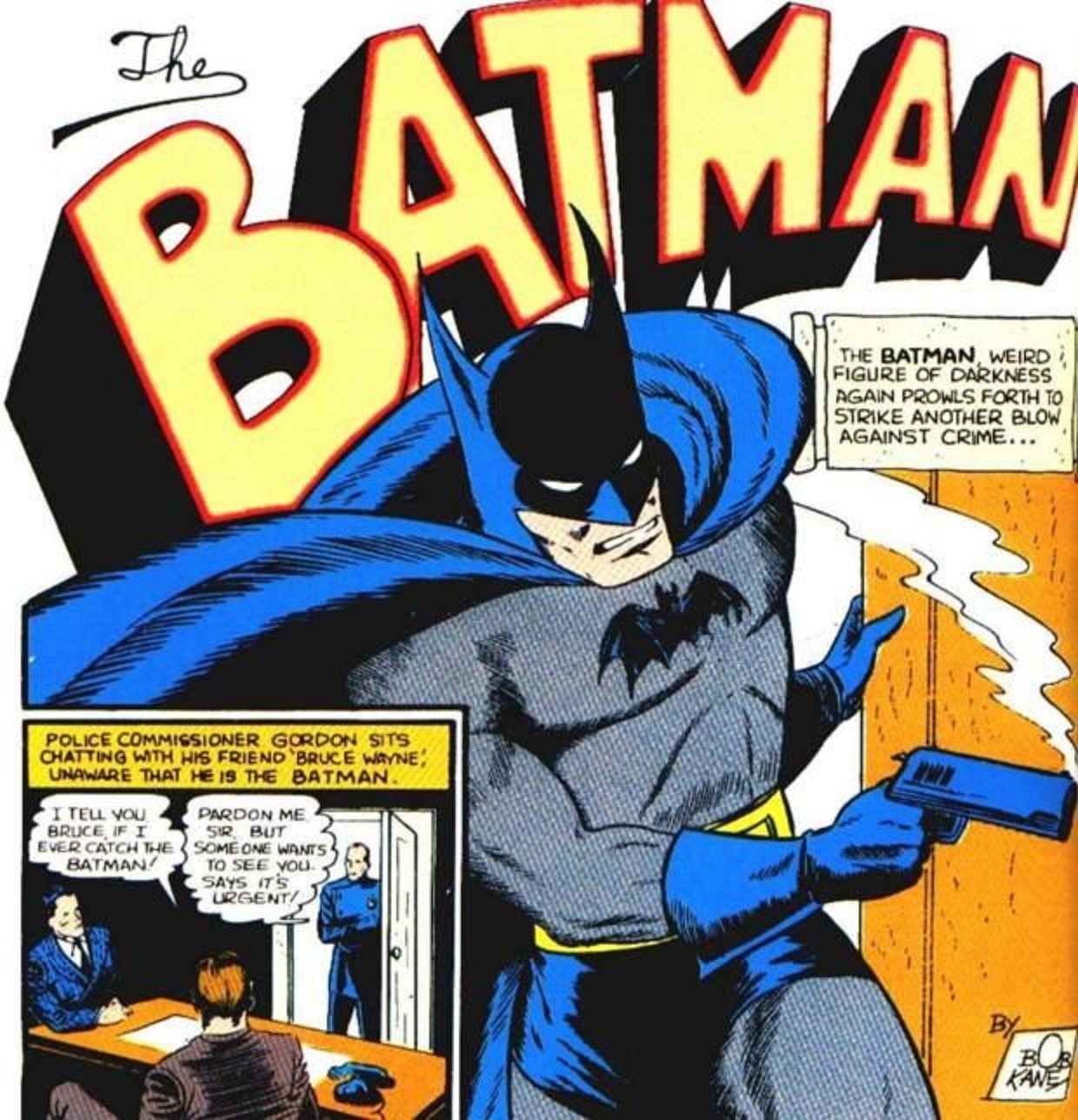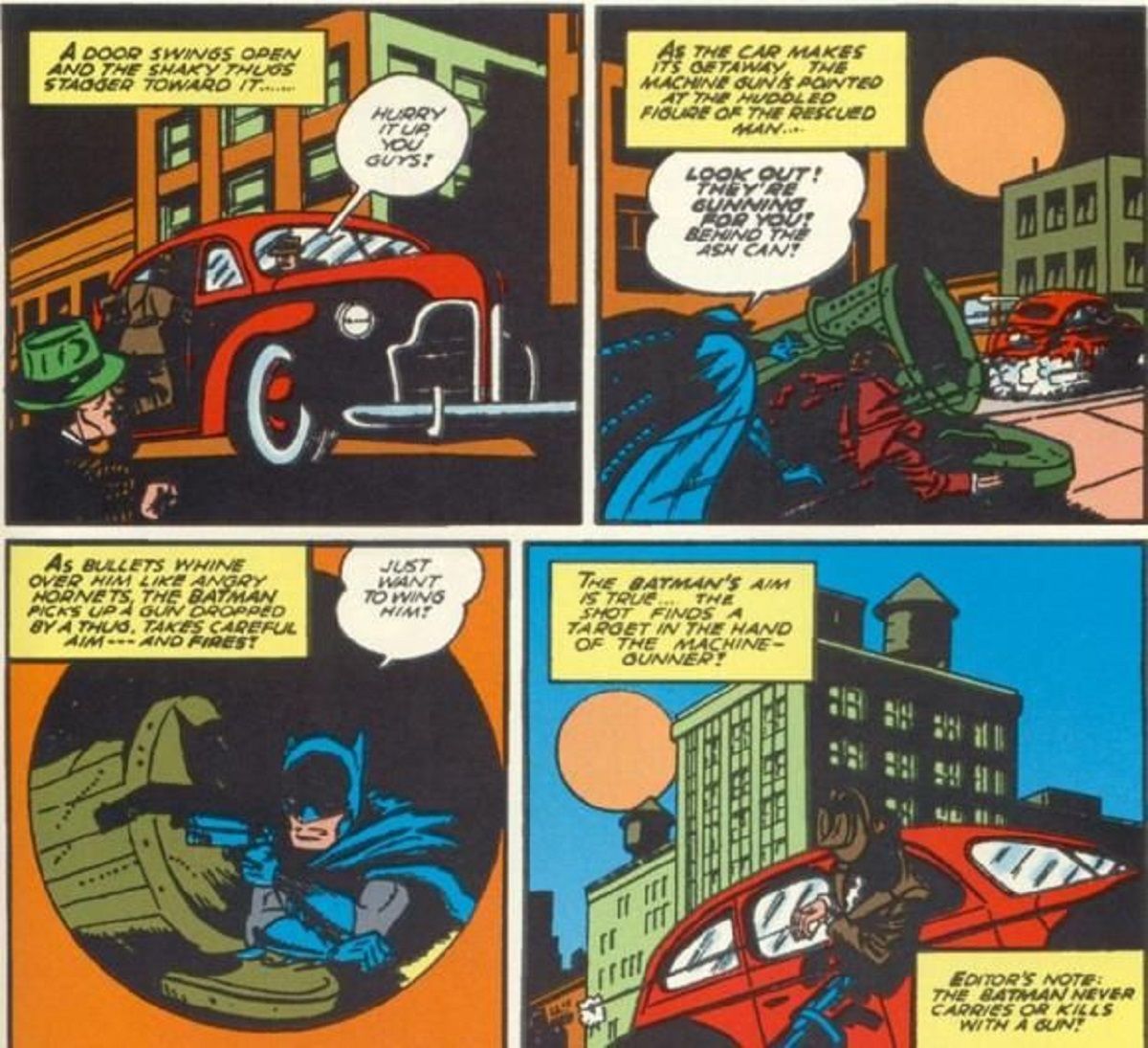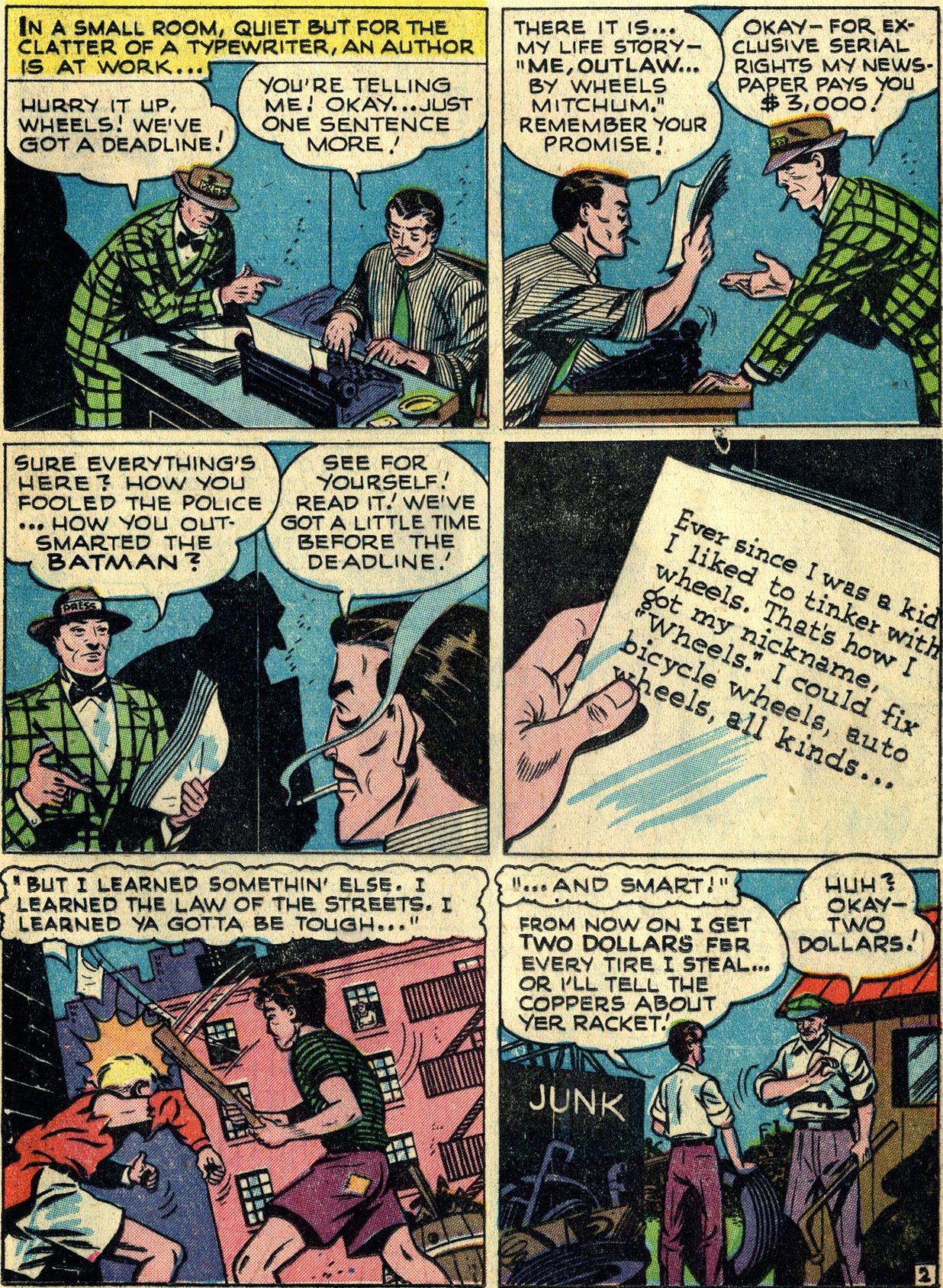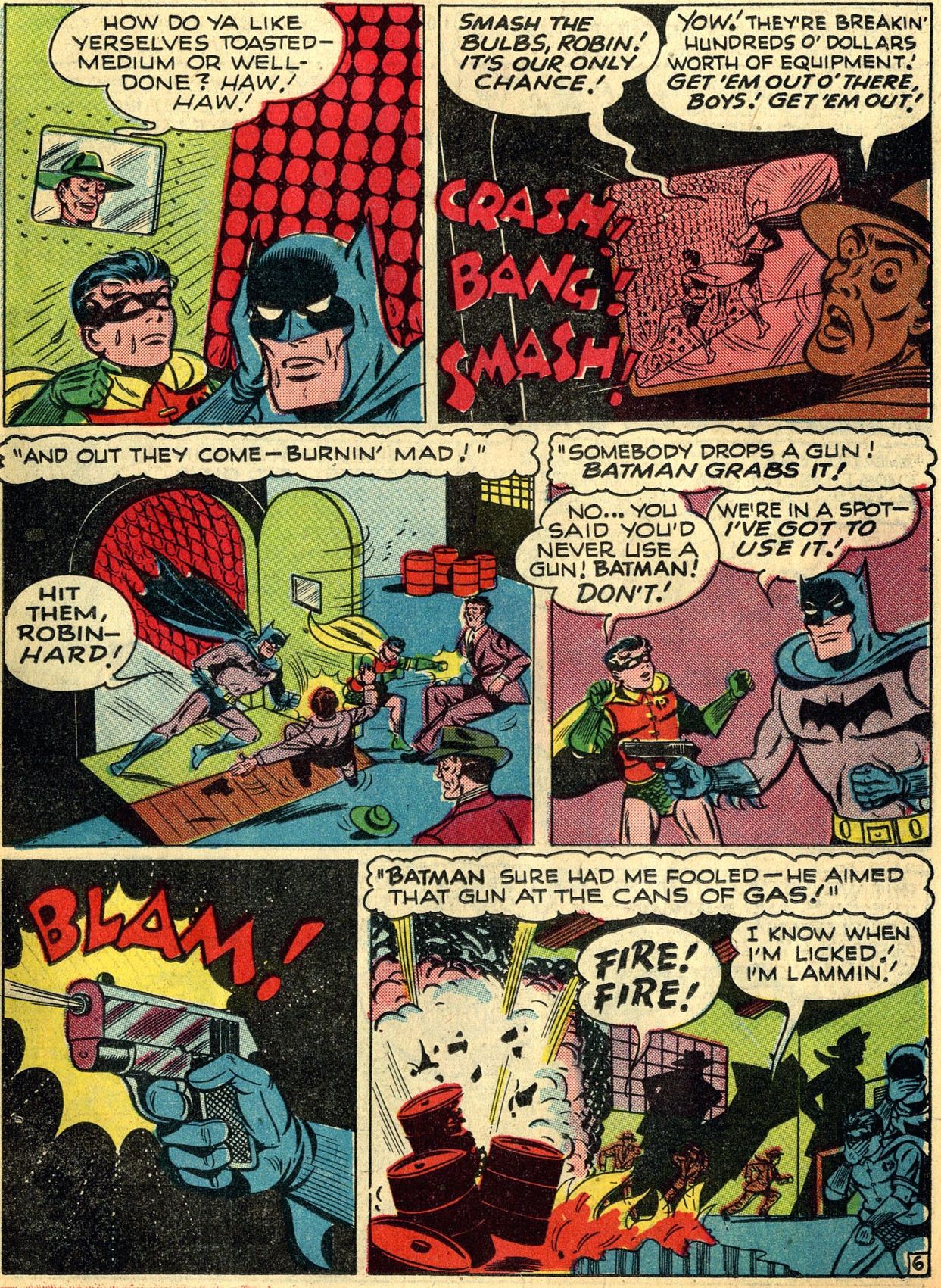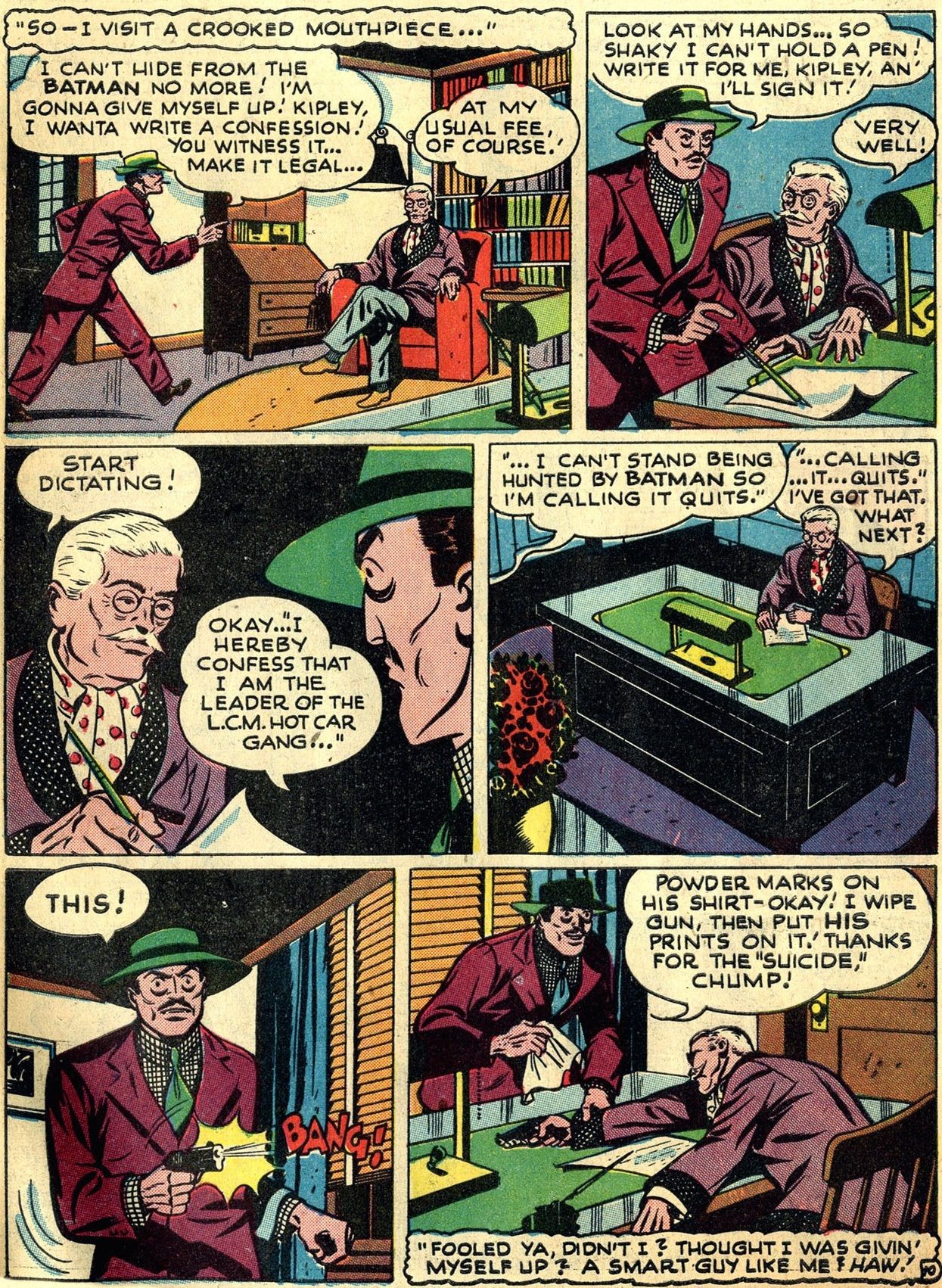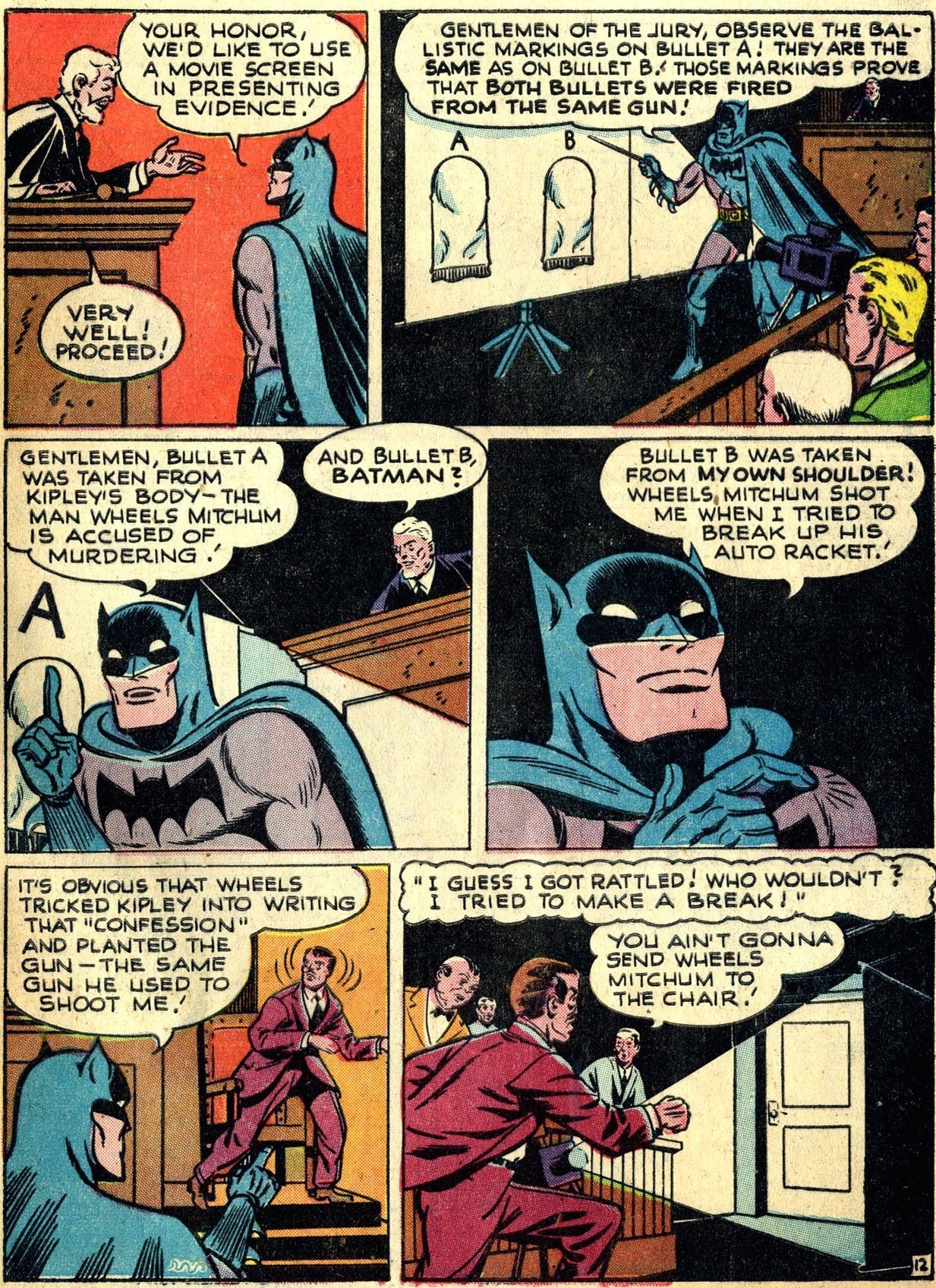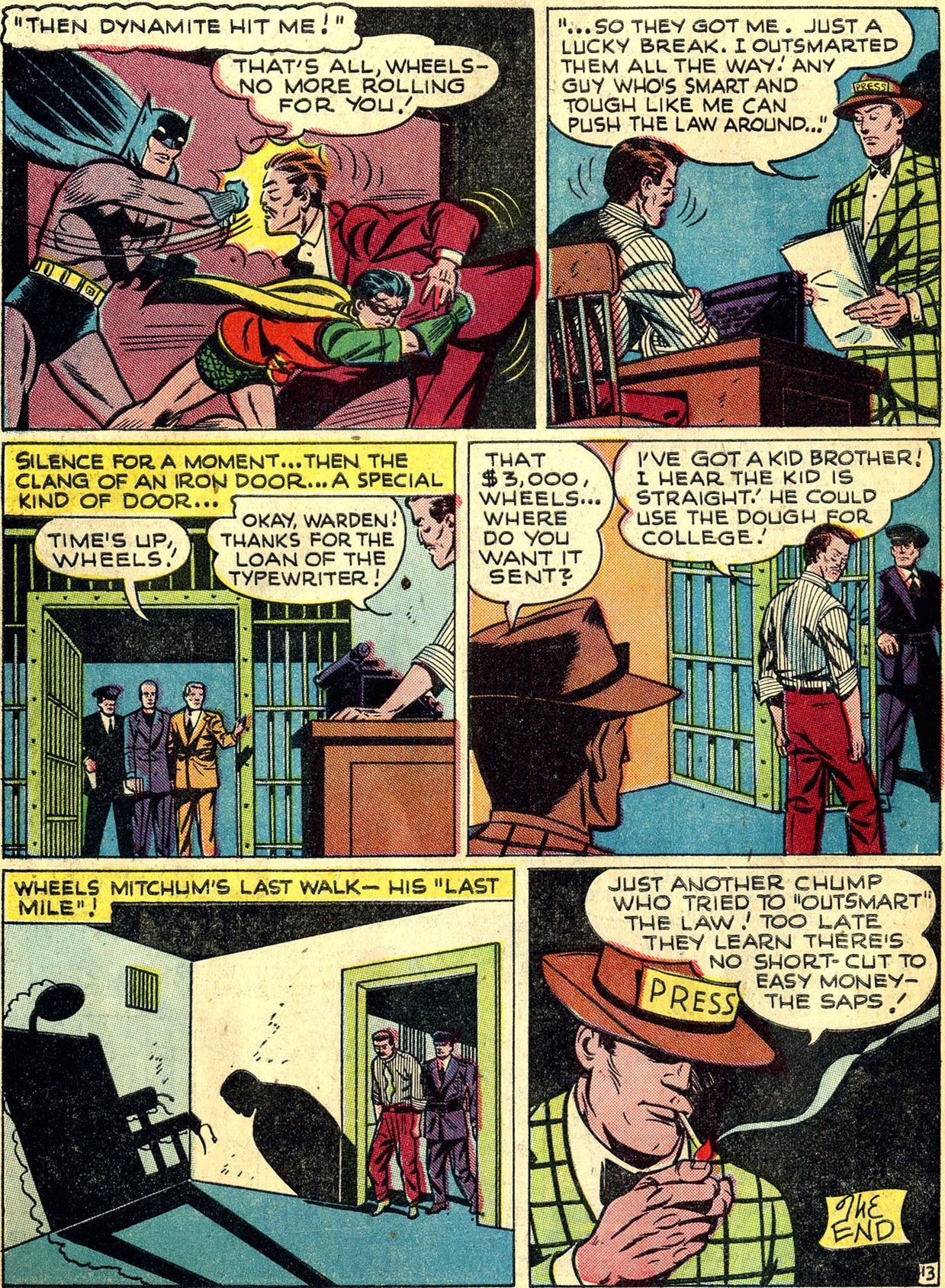Today, we discover the surprising villain who actually drove Batman to use a gun.
This is "Look Back," where every four weeks of a month, I will spotlight a single issue of a comic book that came out in the past and talk about that issue (often in terms of a larger scale, like the series overall, etc.). Each spotlight will be a look at a comic book from a different year that came out the same month X amount of years ago. The first spotlight of the month looks at a book that came out this month ten years ago. The second spotlight looks at a book that came out this month 25 years ago. The third spotlight looks at a book that came out this month 50 years ago. The fourth spotlight looks at a book that came out this month 75 years ago. The occasional fifth week (we look at weeks broadly, so if a month has either five Sundays or five Saturdays, it counts as having a fifth week) looks at books from 20/30/40/60/70/80 years ago.
We go back to January 1947 for a very unusual Batman story called "I, Outlaw" by a mystery writer (Bill Finger, probably) and Jim Mooney from World's Finest Comics #27.
HOW BATMAN CAME TO NO LONGER SHOOT PEOPLE WITH GUNS
When National Comics first got started, they inherited two editors from the fellow that they took over the company from, Major Malcolm Wheeler-Nicholson. Those two editors were Vin Sullivan and Whitney Ellsworth. Ellsworth, however, felt that there was no money to be made in comics, so he left to California to find work there. So when Action Comics #1 came out, Vin Sullivan was THE editor for National Comics. It was Sullivan, for instance, who actually decided to put Superman into the first issue of Action Comics and it was Sullivan who bought the first Batman feature for Detective Comics #27.
Sullivan was very creator-friendly. However, he also had a view toward "creators' rights," so when he came up with the idea of doing a comic book tie-in with the 1939 World's Fair, he cut a deal with National to get a percentage of the sales of the comic. Well, those royalties never seemed to exactly come to Sullivan, and when he discovered that World's Fair Comics was going to continue in 1940 (without his involvement) he just about had it and quit, later noting that he just did not want to be involved with people who were going to treat him like that.
So Whitney Ellsworth returned from California and become the new head editor for National Comics. And soon after Ellsworth returned, he quickly established that National Comics was in charge of these characters, not Bob Kane, Jerry Robinson, Bill Finger, Jerry Siegel or Joe Shuster.
This became evident when Ellsworth made a notable change in Batman #1, decreeing that the Joker would not be killed off (having panels added to note that Joker survived his seemingly fatal fight with Batman in the issue).
Also, Ellsworth was not a fan of the Batman using a gun to kill in the issue...
or Batman carrying a gun period, like in Detective Comics #35 a few months earlier...
So in Batman #4, Batman uses a gun bit there's an editor's note to say that Batman doesn't carry a gun or kill people.
Ellsworth changed Batman dramatically. Eventually, Ellsworth would move back to Hollywood to oversee National's television interests in the Superman TV show and other editors (Mort Weisinger on Superman and Jack Schiff on BatmaN) took over, but they followed Ellswoerth's lead.
SO WHAT DROVE BATMAN TO USE A GUN?
"Me. Outlaw," opens with Wheels Mitchum completing a book that he was paid $3000 to write about his career as a criminal...
We see that Wheels was an ingenious criminal, coming up with a ultra-fast drying scheme so that stolen cars could be painted quickly after being stolen. Batman and Robin happened upon it, though, and Wheels actually SHOT the Dark Knight! He then had Batman and Robin put into the super-fast drying station, with the intent to burn them alive...
They escape and Batman grabs a gun and I adore Robin freaking the heck out at the sight of Batman wielding a gun. He is SO freaked out over it, but luckily, Batman just uses the gun to explode a couple of cans of fuel...
It's still a heck of a panel, right?
Okay, Wheels gets plastic surgery and gets into other criminal activities before defaulting to stealing cars again, but now with a new gimmick, he uses a military loading vehicle and disguises it as a trawler. Stolen cars are driven out to the dock and then loaded on to the ship. Batman, though, figures out the plot and Wheels goes on the run and he comes up with the plan to trick his own lawyer into framing himself before he kills his attorney...
Batman, though, uses the bullet from his earlier gunshot wound to convict Wheels.
Wheels tries to escape but is captured and we see that he is about to go to the chair. He sends he money to his kid brother, not yet a crook like Wheels...
What an awesomely dark ending. You wouldn't see stuff like that once the Comics Code came around.
If you folks have any suggestions for February (or any other later months) 2012, 1997, 1972 and 1947 comic books for me to spotlight, drop me a line at brianc@cbr.com! Here is the guide, though, for the cover dates of books so that you can make suggestions for books that actually came out in the correct month. Generally speaking, the traditional amount of time between the cover date and the release date of a comic book throughout most of comic history has been two months (it was three months at times, but not during the times we're discussing here). So the comic books will have a cover date that is two months ahead of the actual release date (so October for a book that came out in August). Obviously, it is easier to tell when a book from 10 years ago was released, since there was internet coverage of books back then.

